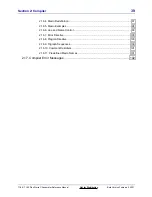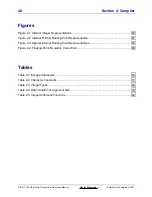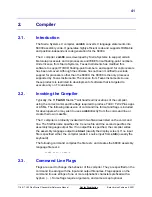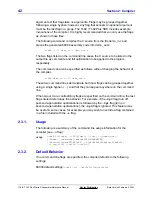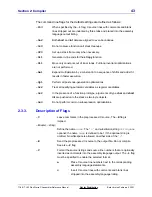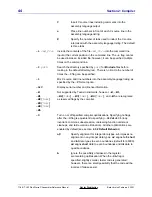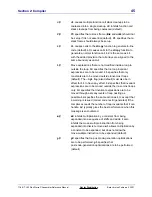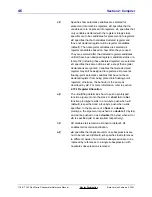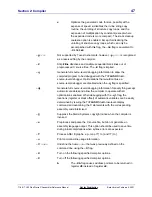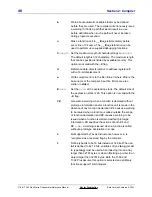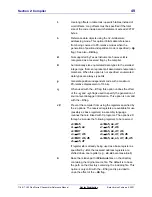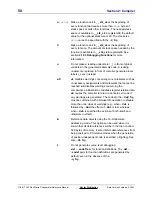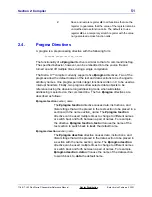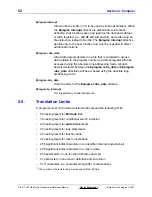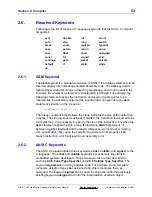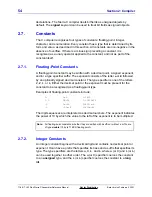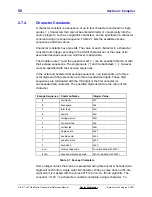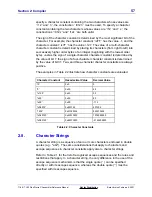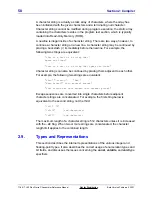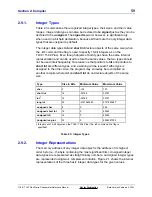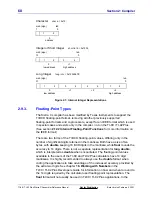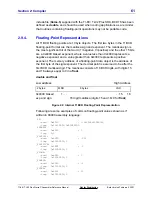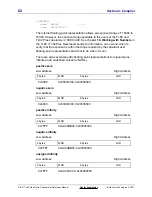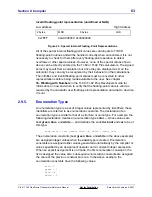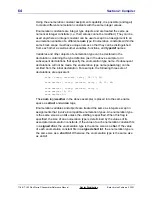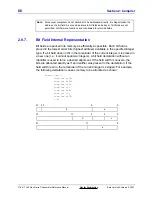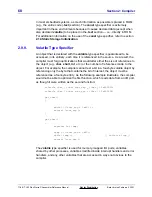
Section 2: Compiler
53
TI
-
89 / TI
-
92 Plus Sierra C Assembler Reference Manual
Not for Distribution
Beta Version February 2, 2001
2.6. Reserved
Keywords
Following is the list of reserved C language keywords that the Sierra C compiler
recognizes:
asm
double
int
struct
auto
else
long
switch
break
enum
register
typedef
case
extern
return
union
char
float
short
unsigned
const
for
signed
void
continue
goto
sizeof
volatile
default
if
static
while
do
2.6.1. ASM
Keyword
The
asm keyword is a standard extension to ANSI C that allows statements to be
inserted directly into compiler-generated assembly code. The asm keyword is
followed by a character string enclosed in parentheses, and it can appear in the
C source file wherever a statement or declaration is allowed. For example, the
following statement causes the instruction enclosed in double quotes to be
inserted into the assembly output at the location that corresponds to the asm
statement’s location in the C source:
asm("move.w #0x2400, sr", 4)
The integer constant 4 that follows the string indicates the size of the instruction
in bytes. The
size argument is optional; if omitted, the instruction is assumed to be
two bytes long. It is necessary to specify the size of the instruction only when the
asm statement appears inside a loop, if statement, switch statement, or
between a goto statement and the label it references. An incorrect or missing
size specification may cause the compiler to generate an improperly sized
branch instruction, which will result in an assembly error.
2.6.2.
ANSI C Keywords
The ANSI C standard added three keywords, const, volatile, and signed, to the
C language. The const and volatile keywords are extremely important to
embedded systems developers. These two keywords are fully described in
sections 2.9.8 Const Type Specifier and 2.9.9 Volatile Type Specifier. The
keyword signed aids in writing portable code. For example, some compilers
recognize objects of type char as signed and others recognize them as
unsigned. The keyword signed can be used in conjunction with the previously
existing keyword unsigned to control the interpretation of certain object

